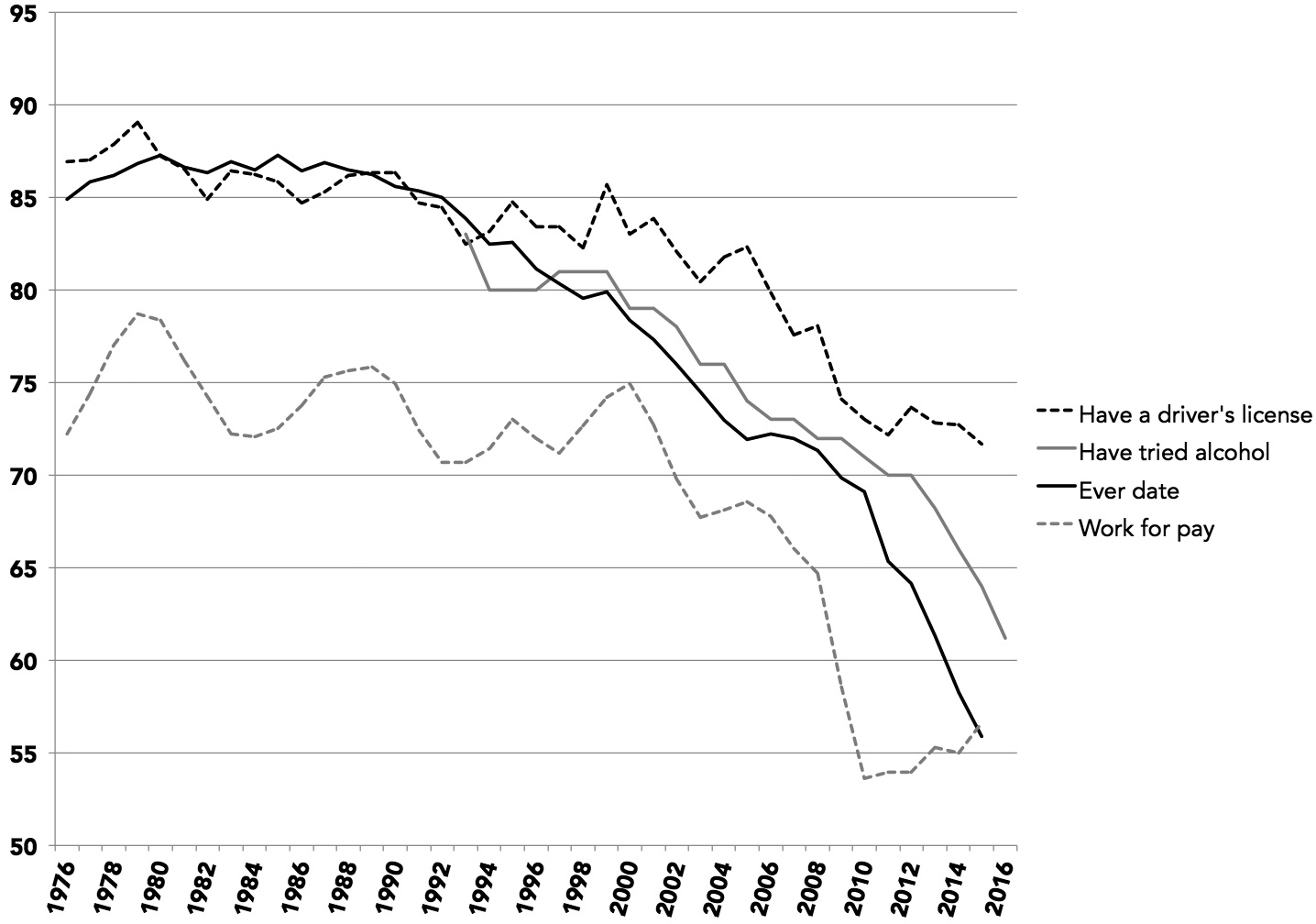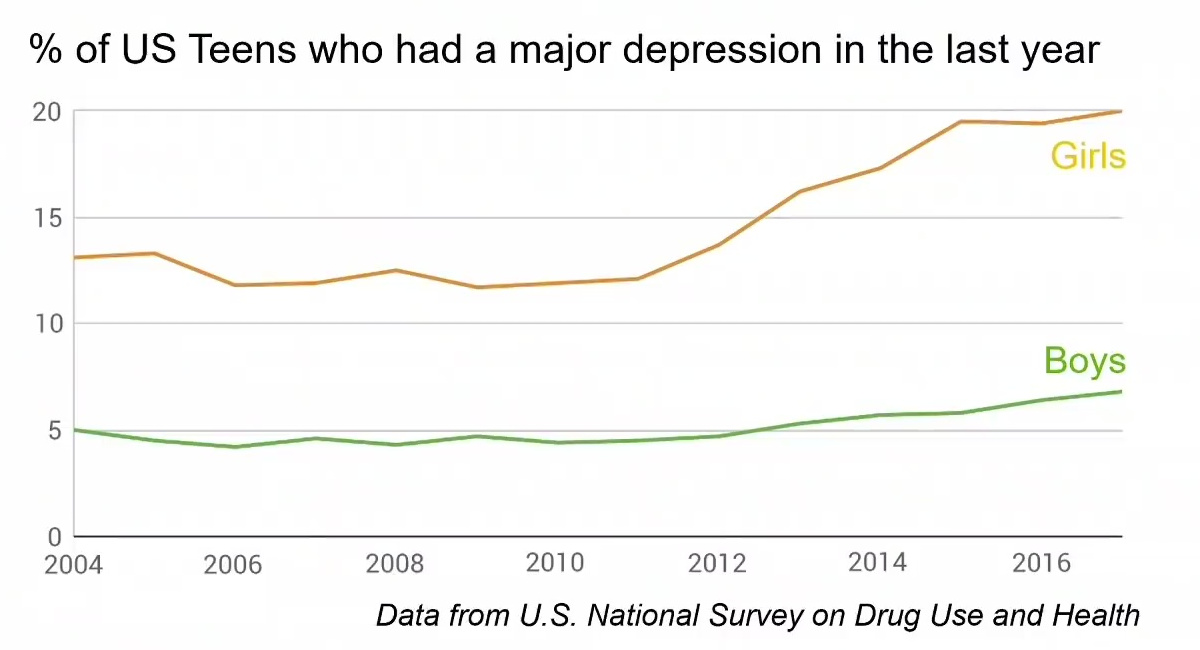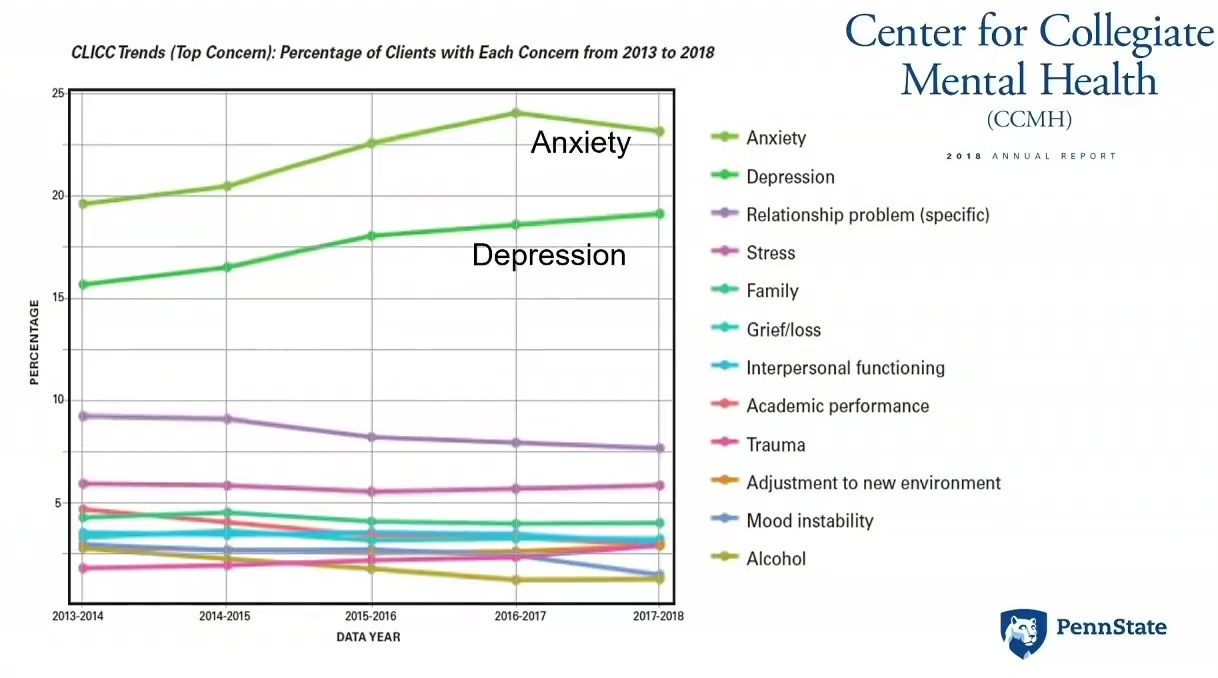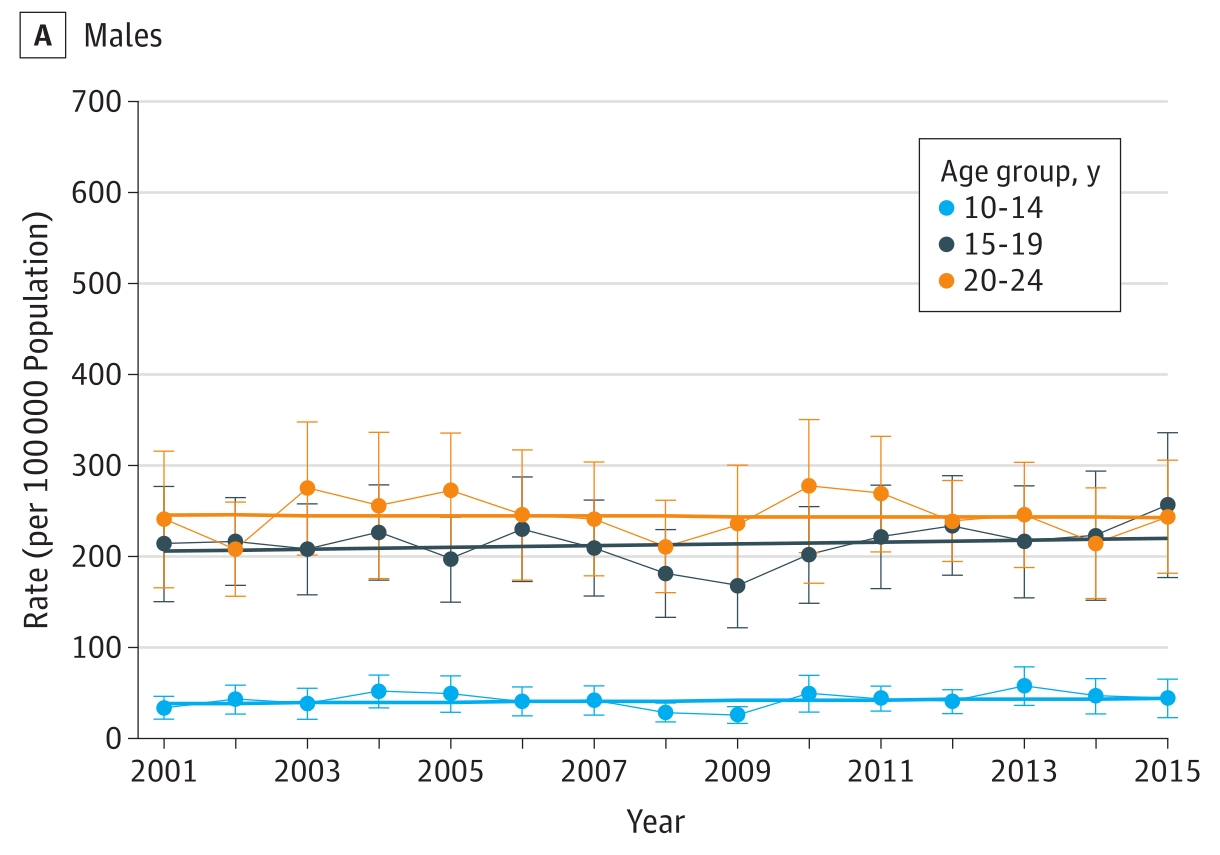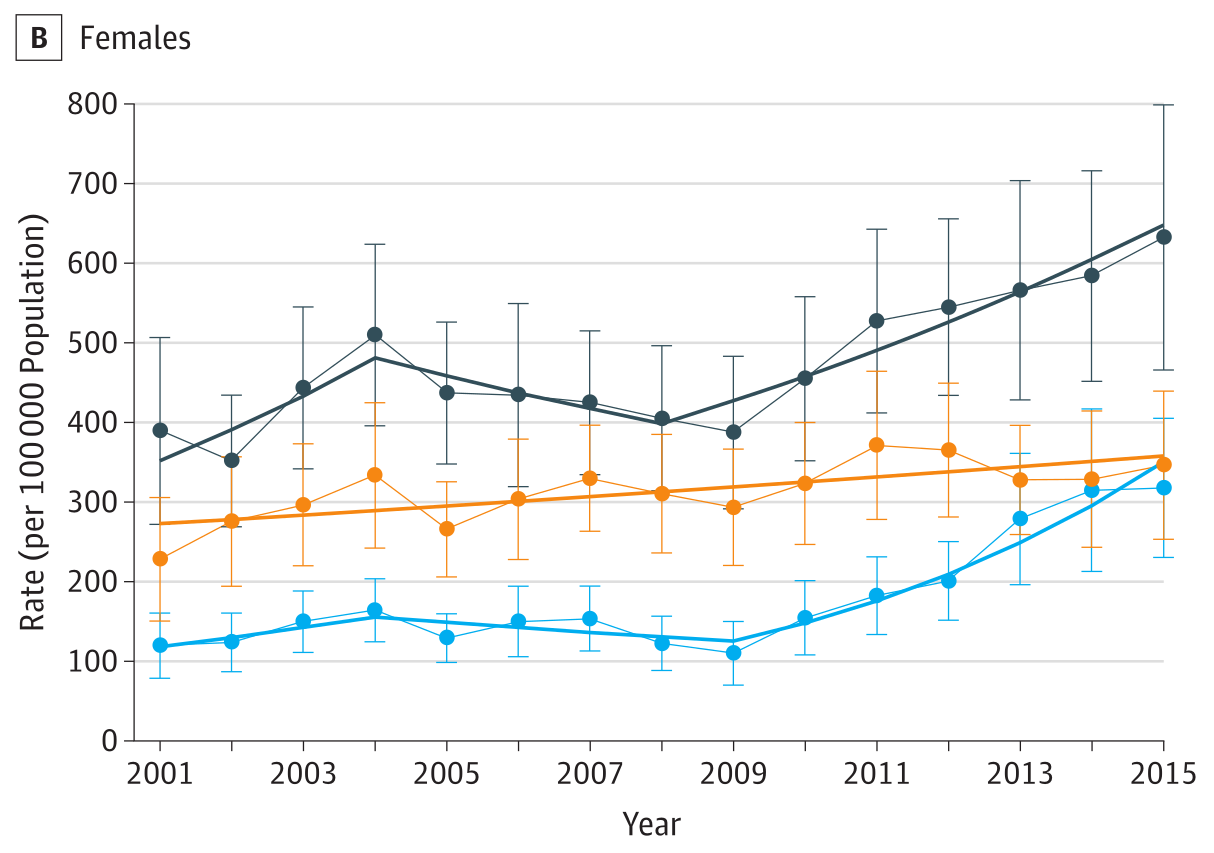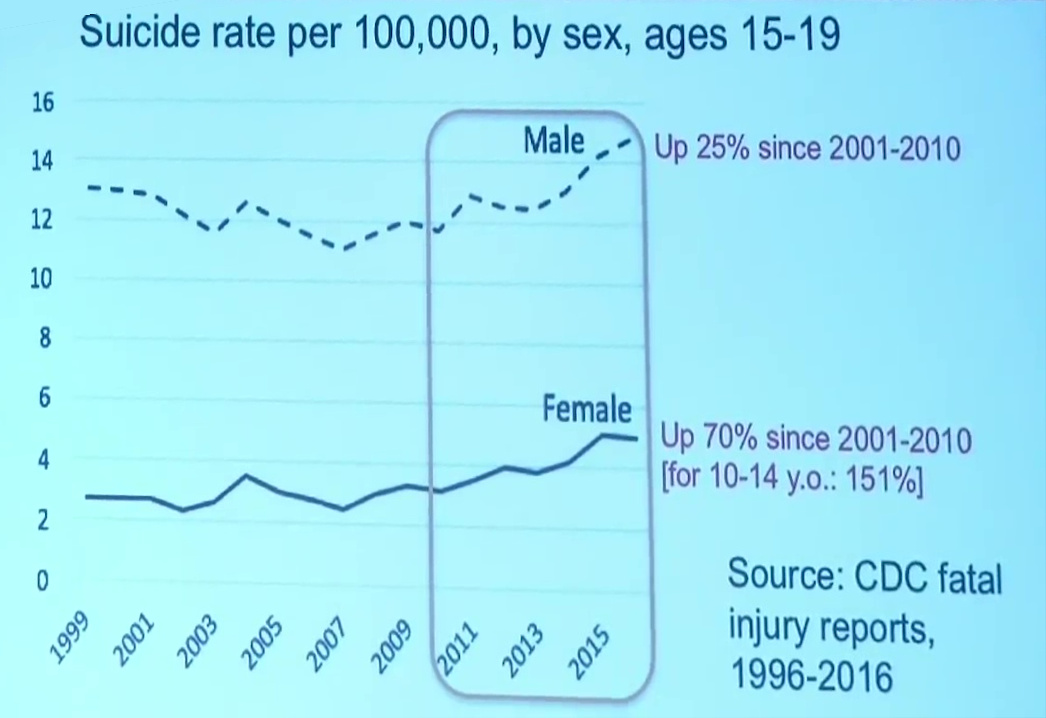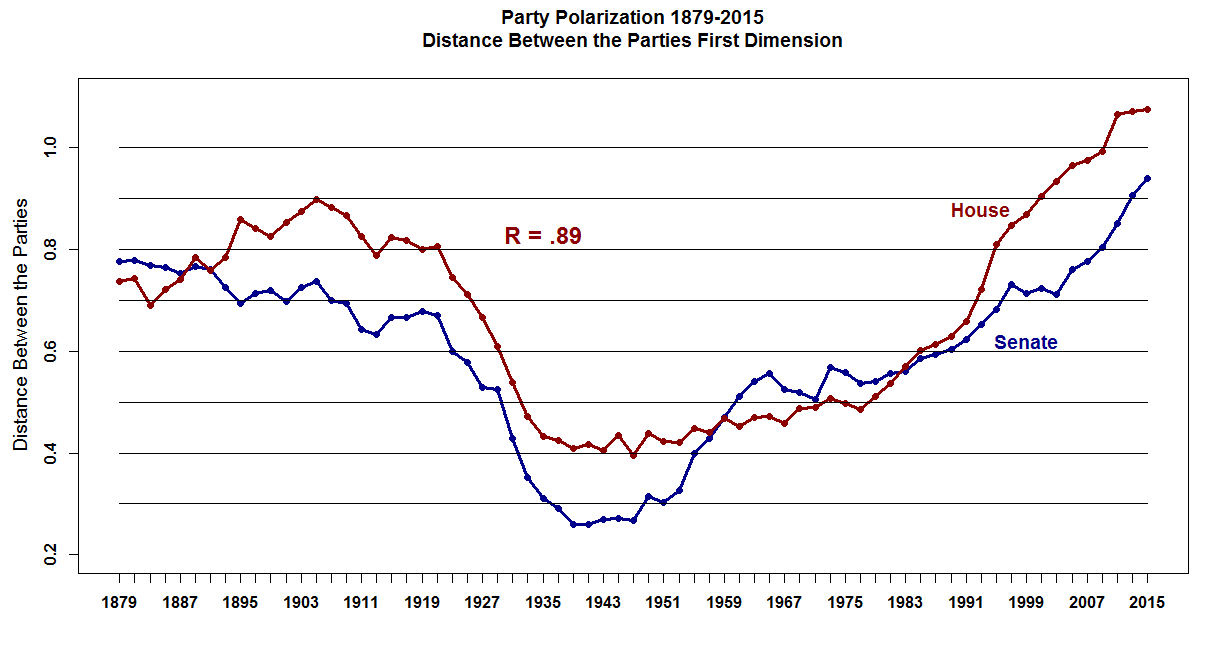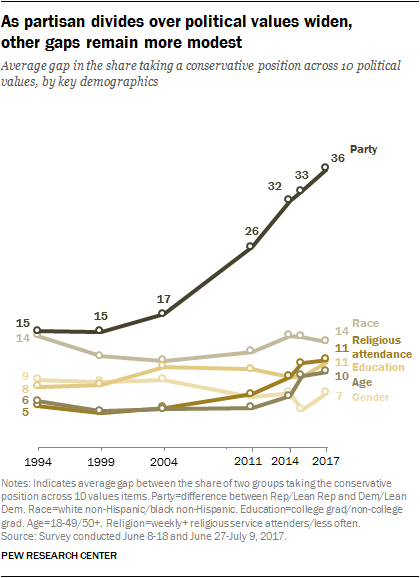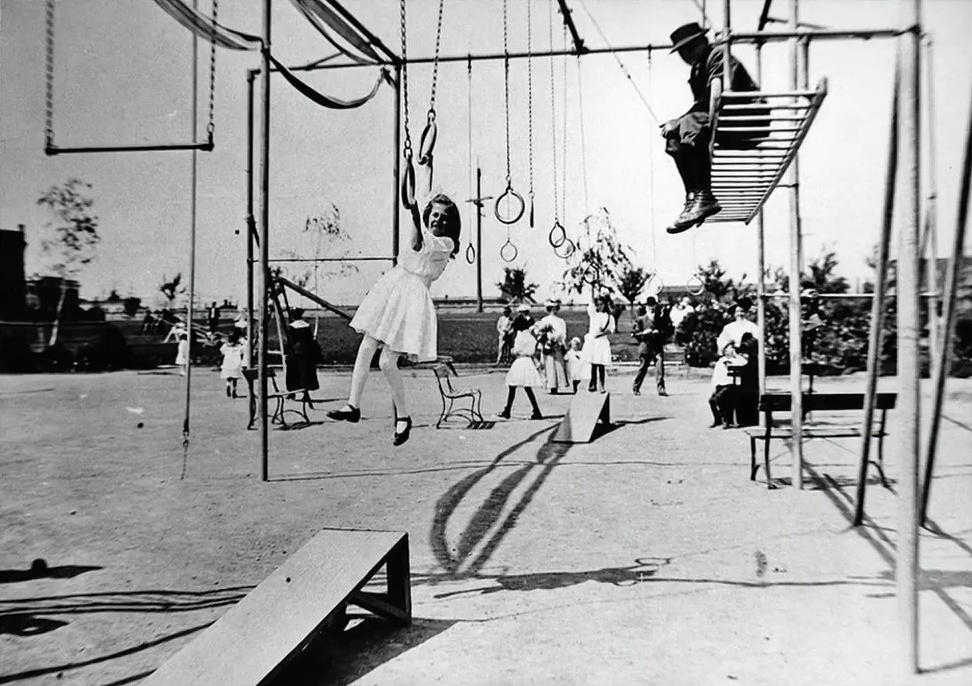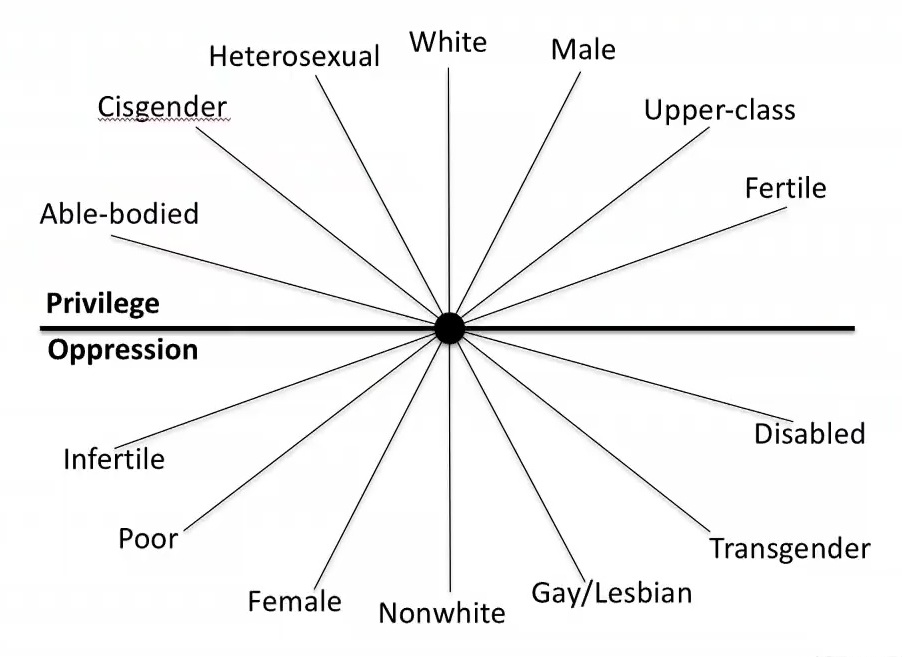The Three Terrible Ideas Weakening Gen Z and Damaging Universities and Democracies
On YouTubeJonathan Haidt at Penn StateJonathan Haidt cherry-picks a few problems affecting America's newest generation from his and Greg Lukianoff's book "The Coddling of the American Mind". He draws evidence from two negative trends: the decline of mental health, as measured by instances of depression and self-harm, and political polarization. Both could partly be explained by changes in parenting from mid-90s, primarily overprotecting kids, leading to fragile personalities with poor social skills.
Mental Health
It's important to distinguish between the previous generation, millennials born 1982–1998 and Gen Z, born after 1995. The two have had different childhoods, and it's only among the latter that mental problems are on the rise.
First, Haidt brought up differences in experiences between the generations at the age of 17–18 (12th graders).
12th grader experiences with driving, alcohol, dating and working from iGen by Jean Twenge.
Instead of driving, drinking, dating or working, Gen Z boys fill their time with video games and girls with social media.
Looking at rates of major depression diagnosed with symptom checklists, there's a rise from around 2010, especially among girls.
Before 2010, things were consistent, with girls having higher rates of depression and boys higher rates of violence and alcoholism. From 2010s onward, when the student body consisted only of Gen Z students, the percentage of people who self-identified as having a psychological disorder like depression, rose steadily, from around 6% to 14% for women and from 2% to 6% for men. Haidt believes computers could be involved as Gen Z got their devices in middle school while millennials, the group with fewer problems, didn't get theirs until college or later.
Counselling center rates seem to confirm the rise, with only anxiety and depression being affected. Other issues like stress are unaffected, so it's less likely Gen Z is merely more open to talk about mental issues. Haidt claims it's rather that they've never learned how to deal with normal everyday problems.
Jonathan then brings up an article from The New York Times, "The Big Myth About Teenage Anxiety" by Richard A. Friedman, that's critical of Haidt's claims. Friedman says the evidence for the rise in depression is purely based on self-reporting. Haidt believes Friedman is wrong because of the objective empirical evidence. For support, Haidt brings up "Trends in Emergency Department Visits for Nonfatal Self-inflicted Injuries Among Youth Aged 10 to 24 Years in the United States, 2001-2015". From 2001 until 2015, the number of boys aged 15–24 that have harmed themselves enough to require hospitalization remained consistent, hovering around 240 per 100 000 people a year.
Self-harm among teenage Gen Z girls, on the other hand, increased in 2009, moving from around 350 to 600 per 100 000 a year. Millennials, who were around 20–24 at that time, were unaffected.
Jonathan's conclusion from the data is that getting social media in middle school could be driving the increase in depression and self-harm. He draws attention to the fact that the youngest group of girls, 10–14, didn't use to hurt themselves before 2009. This same is happening with suicide rates.
While suicide is going down around the world, it's rising in the US. Male suicide rates are up 25% from the turn of the century (equally so in both young and older men). The rise for girls aged 15–19 is up 70% and for 10–14 girls, whose baseline was otherwise very low, it's up 151%.
Business people are said to notice the trend of anxiety in campuses and among new Gen Z employees, with some executives joking about hearing calls from mothers of the employees.
Political Polarization
One way to measure polarization is to look at how easy it is to predict votes given the position of the person on the left-right spectrum. If everybody's voting strictly within party lines, it's fair to say people are polarized. That was the case in 1879–1930. For variety of reasons polarization plummeted around 1930–1960s, but then racked up to even higher levels in the 1980–2000s.
Graph from Voteview.
The Pew Research Center has looked into the divide on political values (complete report in PDF) through a questionnaire with 10 items, and has divided that up by demographic. That is, can you tell something about people's answers based on their gender, education, race or political party.
If you look at the absolute difference by gender, for example, you can see it's been relatively stable throughout the two decades. Differences between religious groups has doubled from 5–6 to 11 points. Neither is as drastic as the gap with regards to political party affiliation, where the difference has climbed from the 2000s at 15 points to 36 points by around 2017.
Ten Reasons Politics Are Worse Than Ever
Ten reasons Haidt posited ten reasons along with political scientist Sam Abrams in Washington Post. He didn't elaborate in this talk, but just listed them:
- Party realignment and purification (1964–1992)
- Mass sorting of liberal versus conservative voters (–1990)
- Changes in Congress (1995–death of friendships)
- Media fractionation (1980s) and the Internet (1990s)
- Residential homogeneity and urban versus rural (1990s)
- End of cold war and loss of common enemy (1990s)
- Increasing immigrations and racial diversity (1990s)
- Increasing role of money and negative advertising (2000s)
- Generational changing of the guard (1990s)
- Increasing education (1970s–)
He says that ever since the Soviet Union fell, people have been taking Western democracy as given, but it's turning out now to not be that easy.
Returning to the campus topic, he notes a rise in shout-downs and dis-invitations in 2016–2017, especially after Trump's inauguration. The few examples he gave were familiar from The Diversity Delusion that I read and published notes on in 2019. Namely, the protests against Milo Yiannopoulos at Berkeley University in 2017 and student mob attack on Charles Murray and Allison Stanger at Middlebury College. In general, students feel it's appropriate to attack others if they don't like what they're saying.
Causes
The events have left a new moral culture of "safetyism" in colleges, where students think of themselves and others as very fragile. It's often reflected in terms like:
- Safe spaces
- Trigger warnings
- Micro-aggressions
- Bias response teams
- "Matrices of oppression"
- Call out culture, often for single words
"Safetyism" could be linked to these phenomena:
- Political polarizations, with purifications of the faculty.
- Rising anxiety and depression for Gen Z immersed in social media.
- Paranoid parenting.
- Decline of free play.
- Growth of bureaucracy and moral dependence.
- Rising passions for social justice with shift to "equal outcomes", not proportional procedural social justice.
Haidt also covers three ideas that he claims, if believed, are so terrible that their follower guarantees themselves to become failures in life:
- What doesn't kill you makes you weaker.
- Always trust your feelings.
- Life is a battle between good people and evil people.
Bad Idea 1: What Doesn't Kill You Makes You Weaker
For this, Haidt brings up his first book "The Happiness Hypothesis" where he went through the literature on happiness. Every society has a resilience principle and it goes like Friedrich Nietzsche's What doesn't kill me, makes me stronger
. In looking for a word for this principle, Haidt arrived at Nassim Nicholas Taleb and his Antifragile book. Taleb suggests there are systems that need to be tested for strength, and came up with the term "antifragile" for things that become stronger if you put them to more use. Human bones are an example of that, which, if exercised, get stronger in proportional to the need.
The human immune system is another example. 1990s to 2010 saw a tripling in peanut allergies. One reason may have been the suggestion given to pregnant and nursing women to avoid peanuts under the assumption that it's exposure to peanuts that cause peanut allergies. Yet peanut allergies continued to rise. According to "Randomized Trial of Peanut Consumption in Infants at Risk for Peanut Allergy", however, the reverse seems to be true — if you expose infants to peanuts, their learns to process them, reducing the likelihood of allergic reactions later.
Protectionism goes beyond peanuts, with parents hovering over and protecting their kids throughout their childhood. Haidt highlights this with a quick audience question — "at what age were you let out to roam by yourself?". That is, going alone to a friend's house or to the store to fetch candy. Audience members born before 1982, gen-x and baby boomers, responded they were out the door around the age of 6–8. Gen Z, kids born after 1994, got out by themselves far later, at ages 10–14. Just as crime was plummeting in the late 90s and 2000s and it was safer to let kids out, parents decided otherwise.
It's also play that has suffered, with less and less unsupervised play available to them. In play we learn how to coordinate, how to be empathetic, how to make rules, enforce them or be flexible with them. What's the effect when you take unsupervised play away from kids? Peter Gray says it leads to psychopathology in his "Decline of Play and the Rise of Psychopathology in Children and Adolescents" article.
Once a kid has learned how to ride the skateboard, they'll be trying to ride down staircases. Kids are seeking out risk their brain needs to evolve, and preventing them from doing so may actually harm them:
Trying to eliminate all such risks from children’s lives may be dangerous. There may be a psychological analog to the hygiene hypothesis. In the same way, by shielding children from every possible risk, we may lead them to react with exaggerated fear to situations that aren't risky at all and isolate them from the adult skills that they will one day have to master. — Alison Gopnik
Good concrete examples can be shown in the evolution of outdoor parks. Whereas they may have started out being occasionally dangerous enough for kids' lives to be at risk, they've morphed past the optimal point of safety into spaces that provide too few possibilities of getting hurt. And it's the possibility of getting hurt that creates confident and able people out of kids.
So in the light of today's restrictive plastic parks...
...we perhaps should be moving back to more exciting ones:
As the dictum goes:
Prepare the child for the road, not the road for the child.
Britain's said to be ahead of the US in that respect, as described in "In Britain’s Playgrounds, ‘Bringing in Risk’ to Build Resilience".
It's about exploring controlled risk, risk that we’ve carefully designed. We've got the gorse bushes, which are quite spiky. The child will touch it and learn it is a spiky bush. — Chris Moran, manager of Queen Elizabeth Olympic Park
In America, however, it's believed that if anyone gets hurt, it's to be banned, leading to ridiculous bans like "University Bans Snowball Fights and Water Guns".
Haidt recently heard of a meme that would be awful to teach to kids:
We are all balloons filled with feelings in a world full of pins.
He then contrasts it with Taleb's metaphor of the candle and a fire, whereas a candle must be protected lest the flame go out, a fire grows stronger with more wind. You want to be the fire and wish for the wind
.
Bad Idea 2: Always Trust Your Feelings
The second dangerous idea is overturned by most cultures and self-help literature, be it Stoics, Buddhists or Hindus.
What really frightens and dismays us is not external events themselves, but the way in which we think about them. It is not things that disturb us, but our interpretation of their significance. — Epictetus
Your worst enemy cannot harm you as much as your own thoughts, unguarded. But once mastered, no one can help you as much, Not even your father or your mother. — Buddha
This is also the mechanism behind cognitive behavioral therapy. If you can get people to question their thinking patterns, they could be freed from their depression. Cognitive behavior therapy teaches you to become aware of common cognitive distortions or biases, among which are:
- Negative filtering — only notice the bad stuff.
- Over-generalizing
- Dichotomous thinking — binary, black and white thinking.
- Emotional reasoning
These biases are encouraged in students on American campuses, by, for example, when they're taught about micro-aggressions. While originally perhaps a useful term to refer to intentional acts of minor hostility, it has now become a term to refer to mere social missteps (faux pas) or subjectively applied to innocent yet often heard questions, like "where are you from?". When so many daily interactions are now labeled as micro-aggressions, you get kids who are hyper-sensitive to interpret unintentional general comments egocentrically as comments about them — balloons in a world of pins. They're beginning to ignore basic aspects of morality, like judging actions by intent.
Haidt says that more faux pas are inevitable when diversity increases. There are two ways to handle that:
- Teach students to be more polite and give everyone the benefit of the doubt.
- Teach students to focus on emotional impact, ignore intent, interpret ambiguous acts as acts of aggression and report each other.
The latter is what Haidt fears American campuses are doing.
Bad Idea 3: Life is a Battle Between Good People and Evil People
We are all prone to tribalism and dichotomous thinking.
If only it were all so simple! If only there were evil people somewhere insidiously committing evil deeds, and it were necessary only to separate them from the rest of us and destroy them. But the line dividing good and evil cuts through the heart of every human being. — Александр Солженицын (Aleksandr Solzhenitsyn)
When you put human tribalism tendencies together with an idea of dichotomies, you get a call-out culture, where before noticing mistakes in yourself, you point them out in others. Kira Barrett described that in her "Walking on Eggshells — How Political Correctness is Changing the Campus Dynamic" article:
During my first days at Smith, I witnessed countless conversations that consisted of one person telling the other that their opinion was wrong. The word “offensive” was almost always included in the reasoning. Within a few short weeks, members of my freshman class had quickly assimilated to this new way of non-thinking. They could soon detect a politically incorrect view and call the person out on their “mistake.” I began to voice my opinion less often to avoid being berated and judged by a community that claims to represent the free expression of ideas. I learned, along with every other student, to walk on eggshells for fear that I may say something “offensive.” That is the social norm here. — Kira Barrett
A big reason Haidt believes is intersectionality. He agrees that the core idea is right — identities don't just add, they interact — being a black woman is not just the sum being black and being a woman. His problem with intersectionality is how it's taught on campuses and interpreted.
Haidt claims intersectionality is taught with identities being binary — you're either on one side or another — and the identities themselves are morally valenced. The ones above the horizontal line are privileged and morally oppressors. Ones below the line are the unprivileged, oppressed and therefore good people. The quintessential oppressors are be those at the top — heterosexual, white and male.
Summary
Haidt ends with corrections to the three dangerous ideas:
What doesn't kill you makes you weaker.Prepare your child for the road, not the road of the child.Always trust your feelings.It is not things that disturb us, but our interpretation of their significance.Life is a battle between good people and evil people.The line diving good and evil cuts through the heart of every human being.
We should welcome viewport diversity and the clash of ideas
.
I believe that learning at its best is the antithesis of comfort. […] The collision of views and ideologies is in the DNA of the academic enterprise. — Ruth Simmons
Haidt also suggests learning more about cognitive behavioral therapy from Cognitive Behavioral Therapy Made Simple.
Q & A
Bullying
In the questions and answers section Haidt clarified the concept-creep of the word "bullying". In original literature bullying was said to be defined by three qualities:
- Power differential
- Threat of actual violence
- Prolonged
These days however every confrontation is seen as bullying. Haidt's suggestion is to give kids more unsupervised time and to not prevent them from solving disputes by themselves. It's only multi-day tormenting you want to prevent.
